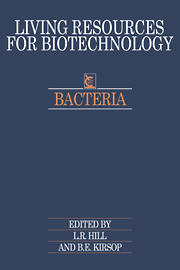Book contents
7 - Culture collection services
Published online by Cambridge University Press: 04 August 2010
Summary
Introduction
In response to the needs of users, many culture collections provide a range of services to the scientific, technological and commercial world. This chapter provides an introduction to the types of services available from culture collections, but it is beyond its scope to give a comprehensive list of such services. As the range of work that can be undertaken is increasing at many of the collections, the reader should contact individual collections to find out whether they can offer particular services.
Types of services
Directly associated and customer services
The two major services which are intrinsically part of culture collection work are those concerning the identification and preservation of organisms. Collections of necessity need expertise in these fields to be able to function, and many provide comprehensive services in these areas. Aspects of culture identification methods (Chapter 5), sales of cultures (Chapter 3), preservation techniques (Chapter 4) and patent deposits (Chapter 6) are covered elsewhere in this volume.
Safe-Deposits. Many collections hold organisms which are not listed in their catalogues. These cultures are held for a variety of reasons: the organisms may not be fully identified, their taxonomic status may be unclear, their stability in preservation may be suspect or they may be held at the request of the depositor who wishes to have back-up material and yet retain ownership and confidentiality, not releasing the strain to other parties. Many collections have introduced safe-deposit services as a back-up to the depositor's working collection, providing a service intermediate between an open collection deposit and a deposit for patent purposes.
- Type
- Chapter
- Information
- Bacteria , pp. 148 - 159Publisher: Cambridge University PressPrint publication year: 1991



